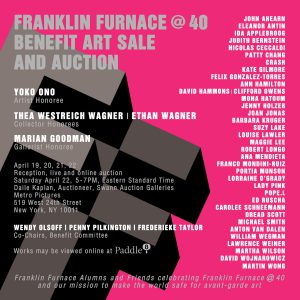Archive for the ‘Fine Art’ Category
Calder & Oiticica at Whitney Museum
If you enjoy work that breaks the norms of fine art; work that invites the viewer to participate, this is a great time to visit the Whitney Museum of American Art.
Through the remainder of the month, on the 8th floor, one may see Museum employees activate Alexander Calder sculptures. With slight touches and hand gestures, Calder’s work is set in motion as it was meant to be enjoyed. Several pieces on display are motorized, unfortunately they do not appear to be plugged in or at least when I was there I did not see them in motion. However, the ones that are activated by human touch are beautiful to see in motion. One may immediately capture the great care that Calder took in combining form and weight to create compositions that have expression through movement. The works are simple and delicate but when they are put in motion they appear to have their own life due to the joints and careful balancing of the pieces assembled to make the whole.
Work your way down the museum and I believe that it is on the sixth floor that one will encounter “An Incomplete History of Protest”. As problematic as the labels “Protest Art” or “Political Art” may be, many of the works in the exhibition were not made in the studio for the gallery, but were realized through collaboration and enjoyed public manifestation on the street in the midst of protest. I tend to consider such art as genuinely “political art” or “activist art”. The exhibition does a reasonable job of presenting an overview of such work over the last fifty years in the United States.
Further down the building, perhaps on the fifth floor is “Hélio Oiticica: To Organize Delirium” which to me is the most fun of all the exhibitions on view. It is unfortunate that the Brazilian artist Hélio Oiticica died at 42 as he was prolific and realized work that is at once provocative, social and contemplative. Several of the galleries, allow the viewer to walk through the work or even wear the pieces as Hélio Oiticica meant the work to be! This is great as it is not uncommon for work originally designed to be tactile has been removed from the visitor’s reach, not so with Oiticica’s exhibition. One gallery even features clothing designed by Oiticica hanging on a rack, for visitors to try on and model in front of a mirror. A walk through the installation “Tropicália, 1966–67” alone is worth the trip to the Whitney. As one winds through the installation, visit the two large parrots in a white cage and if you go around 3pm when they are fed by their handlers you will enjoy their sounds resonating throughout the exhibition.
Realidad VE
Realidad VE is a small experiment that attempts to combine documentary material with virtual space for VR presentation.
Last fall I had an extended interview with José Bergher a retired professor and classically trained musician from Venezuela who was the director of the Symphony Orchestra of Venezuela. Throughout his professional career he worked between New York City and Caracas and the reason behind the interview was to learn about that dual citizenry – about living between cultures and floating from one part of the world to the other. However as the interview progressed, I asked José about the current state of Venezuela – politically, economically and the common problems that people face day to day. He replied with a 20 minute discussion of the rise of Chavez and the current power-grab by Maduro and the lasting influence of Fidel Castro.
I knew that this discussion would not be appropriate for the project that I was working on, but I appreciate his first-hand perspective and given the last several weeks in Venezuela, I wanted to present his voice in a unique format. Entirely based on my news consumption of current protests, clashes and seemingly general instability in Venezuela, I created a blank world with the exception of dead trees and abandoned drilling rigs. The world is populated by men and women running across the space. A boy sits against a tree taking in the world around him. At another spot a young couple argues and elsewhere two friends are in discussion. Along the entire perimeter paramilitary troops stand guard and watch the space. At a couple spots trios of soldiers have friendly discussions. In this world, the military is at ease, though watchful whereas the people appear frantic.
I’m interested in combining documentary material such as the interview with José Bergher with virtual space and employing virtual reality as a platform for documentary. Jose’s discussion of current Venezuelan politics presented an opportunity for experimentation. Pictured above is the project for installation that features an animated José Bergher above the virtual space, the project is online with out Bergher’s video, only his voice accompanies the virtual space as the inclusion of video made an already long load time much longer.
“Once Upon a Place” at Time Square
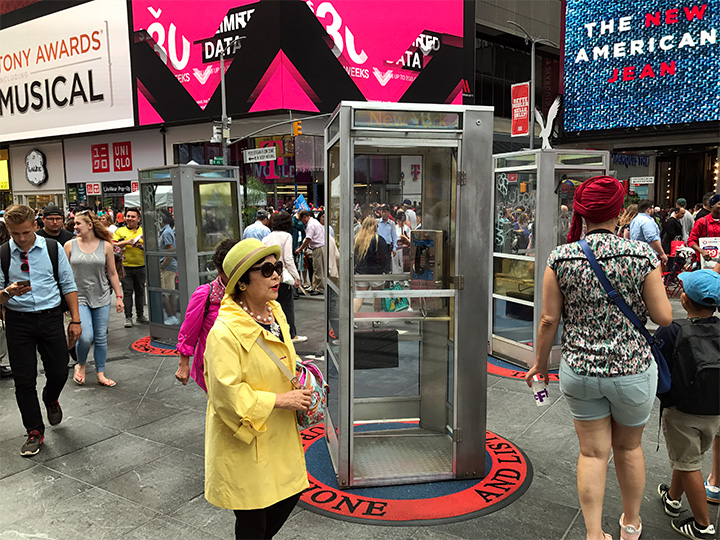
“Once Upon a Place” by Aman Mojadidi at Time Square
Repurposed public phone booths are a poor vehicle for the sharing of immigrant stories. As an artist largely dedicated to reflecting upon migrant populations and cultural dislocation, as soon as I heard about Aman Mojadidi’s “Once Upon a Place”, installed at Time Square, I knew that I needed to visit the project. I worked out a deal with my son and hauled him up to Time Square. Upon entering Duffy Square, we encountered three old phone booths sitting on red and blue carpets with phrases such as “Global Stories” along the circular perimeter.
The first one I entered did not appear to function. I picked up the receiver, put it to my ear and heard only silence. I searched for instructions on the phone as I pushed the numerical keypad, nothing. I pulled out the phone book hanging below a steel shelf, but there was no information as to how to activate the phone. I considered putting coins in the slot, but didn’t have any. So then I stepped out, and read the signage for the project, still no instructions. At this point, the other phones were empty so I tried a second phone booth.
Upon putting the receiver to my ear, I heard the voice of a woman. She was from Mexico and she was describing the hardships and poverty of her home town. The story was brief. She was followed by a man from West Africa, I do not recall the country. He has well explained his desire for a new life due to the intense poverty of his upbringing. The next man, if I recall correctly was Dominican and he explained how his entire family had immigrated to the United States. He was left alone in his country, so he felt that he had little choice but to migrate to the United States…
I believe that the reason that I don’t recall details from these personal stories, besides the fact that it was hot and uncomfortable in the phone booth, is that they were not very interesting. The use of the repurposed phone booth to share immigrant tales is clever (though I don’t recall and can’t imagine a phone booth ever being a popular means to call family across borders), but the framing and presentation of the content does not make the work compelling. Ultimately, the work relies on the strength of the subjects the artist has captured and the artist’s capability to steer the conversation or interview and stir nuance from the subject. The three subjects (of 70) that I listened to were not engaging story tellers. Their experiences were sad and clearly state the need to escape a harsh reality and yet they did not summon empathy or any emotional reaction in me.
However, my time with the project was cut short, by a bored nine year old, who started tapping down the phone’s hookswitch and with each tap the voice from the receiver would go silent. The recording would not pause as when he lifted the hookswitch and I heard the voice again, it did not begin from the stopping point, but rather the audio was continual. So once we were both frustrated, I relented to his desire to move on.
We sat in the stands over looking Duffy Square and ate lunch. I continued to observe the installation. Sadly there was very little interest in the project from the throngs of tourists on a summer Saturday afternoon as the phone booths remained largely empty. Occasionally a curious tourist would poke her head in, listen for a few seconds and then walk out.
My take away from interacting with the installation and observing the public interest: a multitude of stories or interviews, apparently a total of 70, does not generate an interesting project. A single compelling story teller is more significant than many interviewees. Secondly, I found the combination of the immediate surroundings and the heat within the phone booth too distracting to focus on the audio for very long. Time Square is not a good location for audio installations that rely upon focused engagement. Lastly, I’ve got to stop taking my son to see art work that I wish to engage with for any extended period of time. Perhaps, I’ll go back at night by myself and have a different experience.
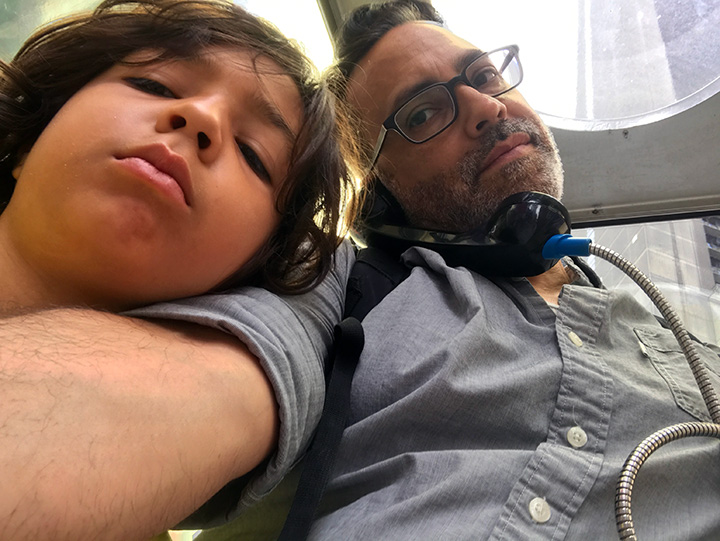
Sharing the phone at Aman Mojadidi’s “Once Upon A Place”
The installation commissioned by Time Square Arts will continue to be available until September 5th at Duffy Square – West 46th Street and Seventh Avenue.
“Hansel & Gretel” at Park Avenue Armory – Save Your Money

The “Hansel & Gretel” curatorial statement describes the installation as a space that brings together Jacques Herzog, Pierre de Meuron and Ai Weiwei combined interests in
the psychological impact of architecture and the politics of public space; creating a playful, strange, and eventually eerie environment with different layers of reality revealed to the visitor… Hansel & Gretel is a dystopian forest of projected light where the floor rises up, as if lifted by an invisible force, and visitors are tracked by infrared cameras and surveyed by overhead drones as they systematically capture the parkgoers’ data and movements…
Unfortunately, the only portion of this description that resonates is the playfulness. Indeed Herzog, de Meuron and Weiwei have created a dark environment in which visitors may skip around and play with light traces of their image. However, the installation lacks strangeness, eeriness, politics or any psychological reverberation.
Other than the initial moment of discovery that one’s image is being projected on to the ground after it is periodically taken due to on one’s movement in the space, the installation presents very little that is interesting. The drones may have been a neat prop had they not been tethered.
The second part of the installation is a didactic revelation of what the installation is trying to allude to – that we are objects of surveillance. As far as a critical art installation regarding surveillance, there was much more interesting work done 15+ years ago. Perhaps the theme of surveillance has been so overly investigated and picked apart by art previously and by entertainment today (“Black Mirror” for example) that such an installation seems trite and naive. There is so much of our data being captured today, that building an installation that merely plays upon facial recognition and motion sensors is just kind of dumb, but it is playful. So if $16 is worth the cost of running around a huge dark open space and playing with light projection, check it out.
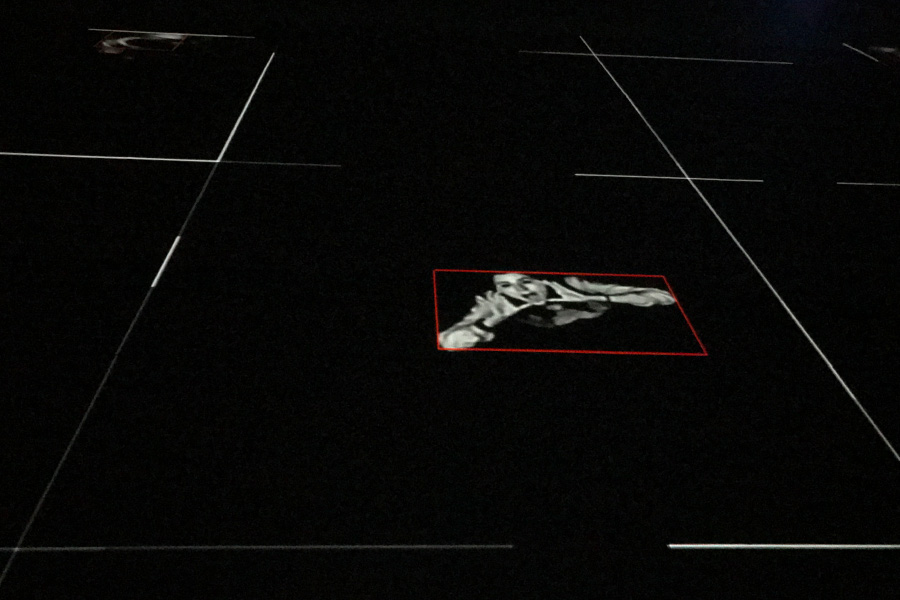
A second perspective: Playtime at the Armory
Once again discovering what this city has to offer, there I was with Ricardo walking into a venue called the Armory near Hunter College, a place I had never been before to see a new art installation called “Hansel & Gretel”. He had been keen to check this out for a few weeks, and like the curious creature I am, I followed along.
We received a quick intro and were instructed to read a phase on the wall before entering -which i forgot- and then allowed to enter. We walked into black nothingness. My immediate reaction was to scramble for Ricardo’s hand. I didn’t realize the massiveness of this place until my eyes adjusted from the summer sunlight to the darkness inside of the Armory. It was only eerie the first few minutes because I had no idea where the hell I was walking. There were a few cameras far above us hanging from the ceiling and lights that would follow us. As we continued to walk, our movement was detected, grid lines would appear and cameras would be activated to capture our moves. Suddenly, it was playtime! It was fun to pose in different positions to watch the resulting snap shot of yourself illuminated on the black floor. At one point my sweater and shoes came off and I really got into it.
Ricardo noticed two drones hovering on one side of the space living poor unfulfilled lives- tied onto leashes without free movement. It would have been more interesting if they were chasing people around. After exhausting our ideas for poses, the novelty wore off and we were ready to enter part deux of the installation. For that, we had to exit this part of the Armory and enter from another entrance on the other side of the street.
After pausing in front of a camera you were allowed inside. There were many ipads on long tables with apps. You could elect to have your face identified and then search the cameras for your photo which was taken in the first part of the installation. That was cool. You could read about the history of surveillance, or access cameras to spy on others walking into the exhibits. The Armory itself was impressive, the installation not as much. It was a new, interesting experience- a fun activity for kids, I would say. I didn’t leave with the feeling that I had witnessed an impressive statement against today’s constant scrutiny and monitoring that we are all under. I didn’t feel intruded upon. There wasn’t anything menacing or fantastical as is described in the program leaflet. It was just pretty cool and fun.
Perhaps the work behind the installation was complicated, but with my lack of technical know-how, I failed to appreciate the amount of effort involved. To have truly made an impact, more could have been done to confuse or play with the audience with the intention of throwing them off or perhaps even scaring them. Coupling that with the sound of Russian men having conversations in the background (that felt clandestine in nature), and I would have possibly left quite feeling differently.
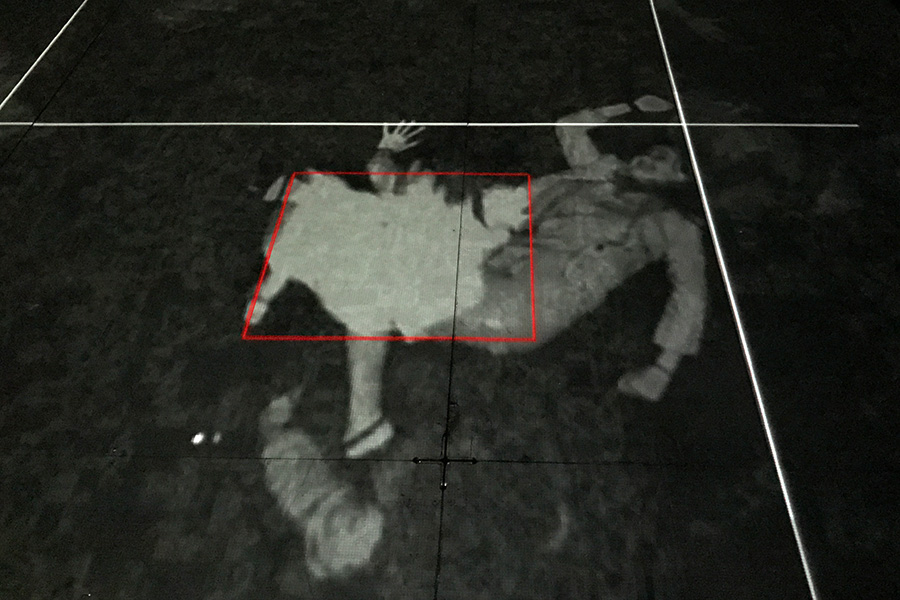
FRANKLIN FURNACE @ 40
Help the Franklin Furnace continue to make the world safe for Avant-Garde Art (the really weird shit that the NEA is afraid of). The Furnace has turned 40 and is now relocated in Pratt Institute, however, in order to re-grant money to artists that challenge the norms of our society, the Furnace needs financial help. Anyone can donate to the Furnace anytime, but at this time the Furnace is holding a benefit art sale and you can participate via Paddle8!
Exhibition, Friday-Saturday April 19-22, 10am-6pm
Reception and Live Auction of Five Works, Saturday April 22, 5-7pm
Metro Pictures, 519 West 24 th Street, New York, NY 10011
FRANKLIN FURNACE @ 40 Honorees
Yoko Ono, Artist
Thea Westreich Wagner & Ethan Wagner, Collectors
Marian Goodman, Gallerist
FRANKLIN FURNACE @ 40 offers for sale original art by:
John Ahearn, Eleanor Antin, Ida Applebroog, Judith Bernstein, Patty Chang, Nicolas Ceccaldi, CRASH, Kate Gilmore, Felix Gonzalez-Torres, Ann Hamilton, David Hammons/Clifford Owens, Mona Hatoum, Jenny Holzer, Joan Jonas, Barbara Kruger, Suzy Lake, Louise Lawler, Maggie Lee, Robert Longo, Ana Mendieta, Franco Mondini-Ruiz, Portia Munson, Lorraine O’Grady, Lady Pink, Pope.L, Ed Ruscha, Carolee Schneemann, Dread Scott, Michael Smith, Anton van Dalen, William Wegman, Lawrence Weiner, Martha Wilson, David Wojnarowicz, Martin Wong.
Fabrica Habana
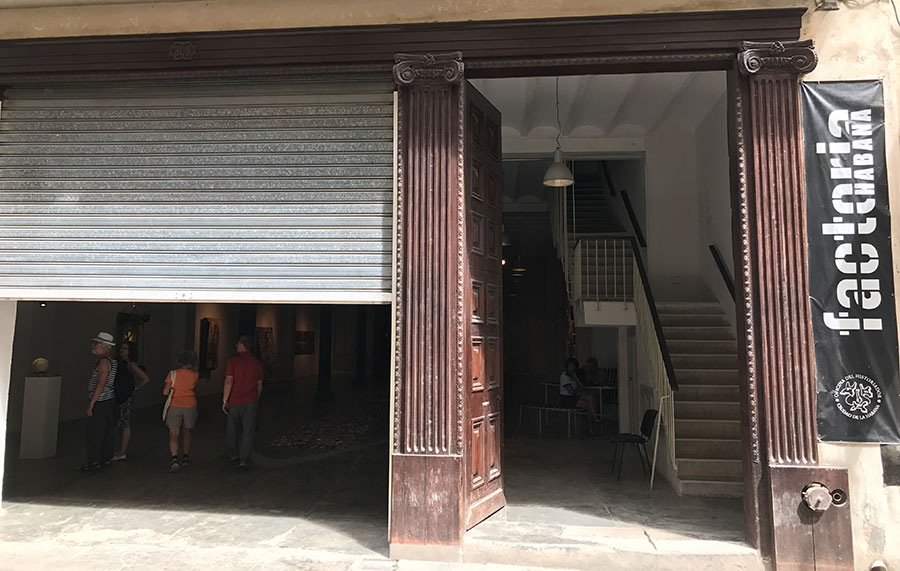
Fabrica Habana, contemporary art gallery of Concha Fontenla, Habana, Cuba
Currently on exhibition at the beautifully renovated colonial home turned contemporary art gallery by Concha Fontenla in Old Habana is a three story exhibition by Cuban artists Jose Toirac and Octavio Cesar Marin. Toirac and Marin draw from various artistic movements such as Conceptual Art and Arte Povera to create a study of the recent history and current reality of Cuba. The gallery consists of three floors and if one begins at the top and works their way down, there is a chronological thread throughout the exhibition. Beginning with allusions to Ancient Western Philosophy and Christianity. On the third floor one will find a broken bronze vase to commemorate Diogenes de Sinope (412-323 BCA), a Greek philosopher of the “escuela cinica” who gave up all material goods and lived as a vagabond on the streets of Athens searching for the honest man.
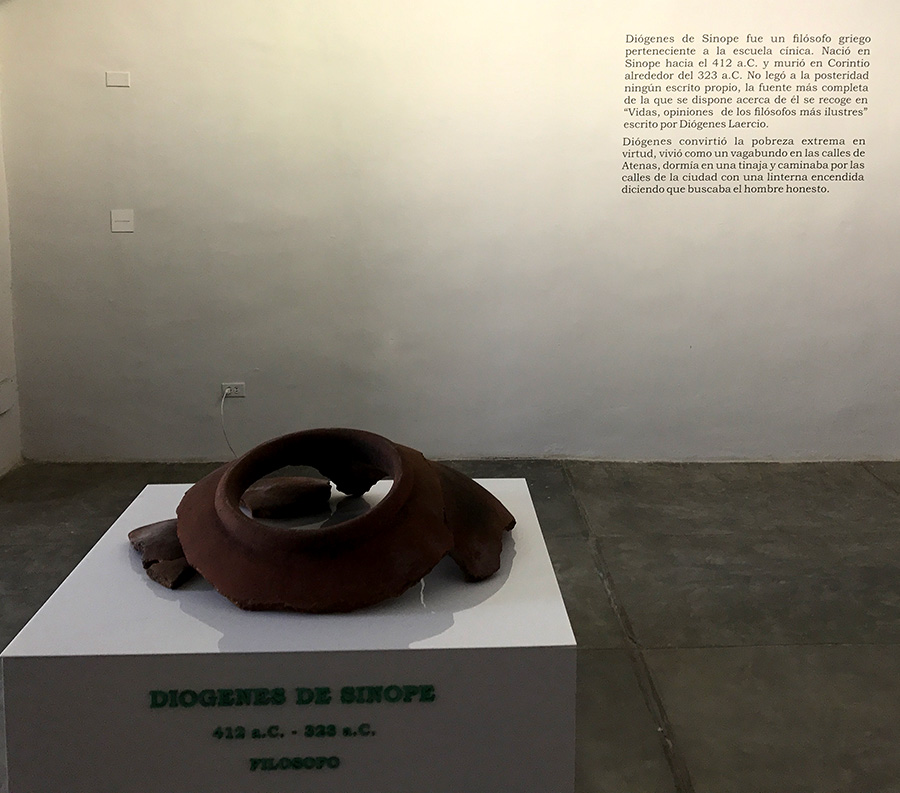
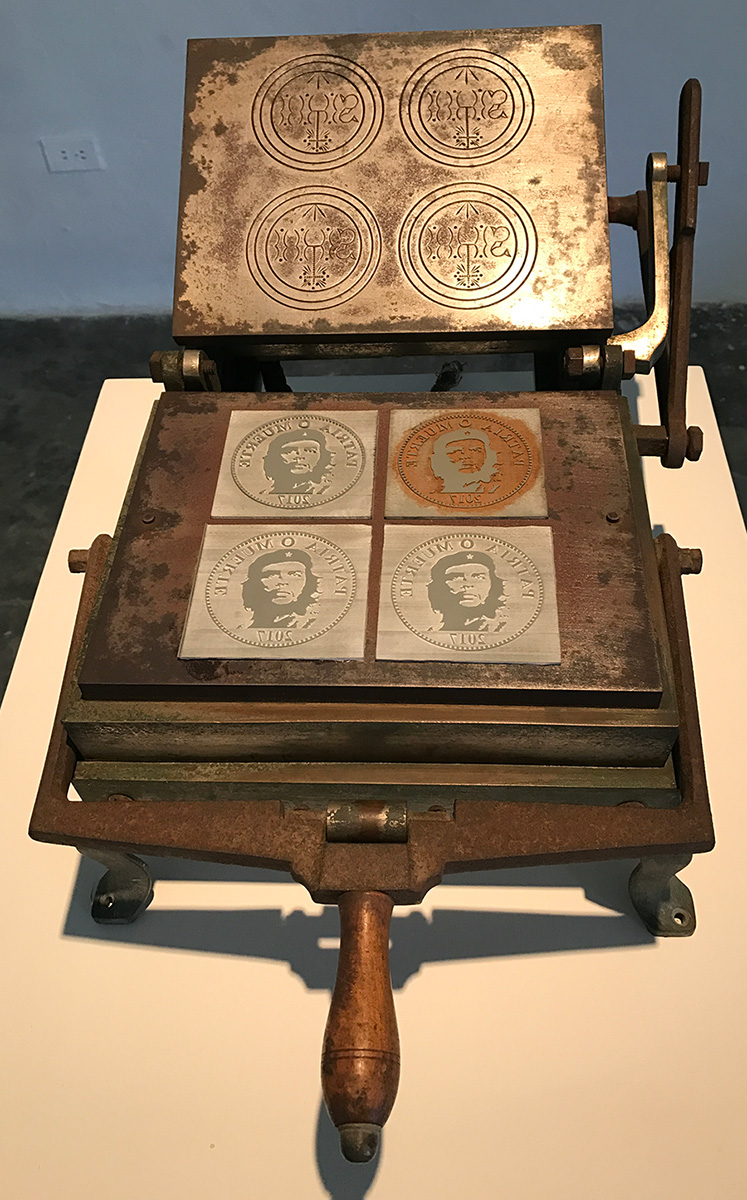
On the same floor, a metal press sits on a pedestal. On one side of the press, is the symbol of christ as stamped on to the eucharist and on the other plate is the portrait of Che Guevara with the phrase “Patria o Muerte 2017”. Above the press is a quote from Fidel, stating that every child should be modeled after Che, an honest and virtuous man. To the right of the press is a long table with two dozen tin cups filled with packaged eucharists stamped with the portrait of the Che. Above the table floats a holy chalice also with the portrait of El Che.
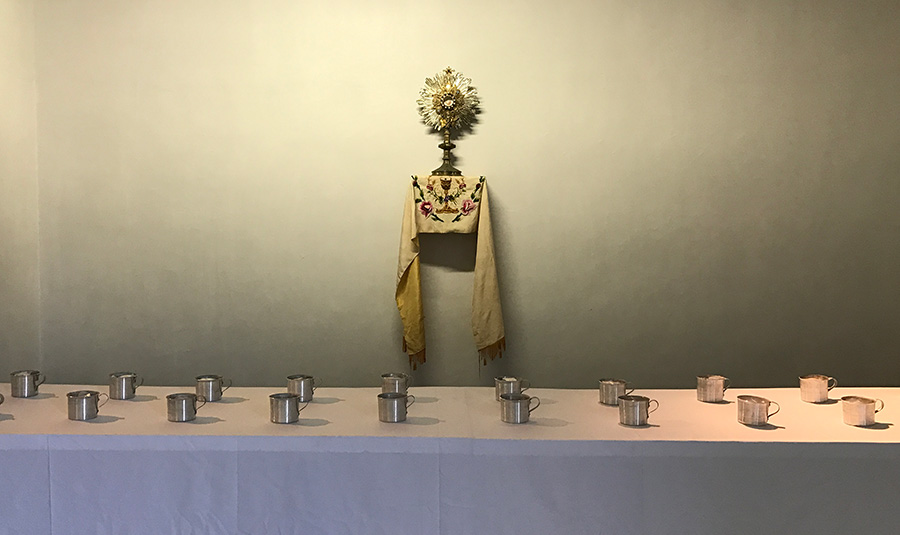
On the second floor one will find many memorials to famous Cubans. Each memorial is a pedestal with the name of the historical figure, the dates of birth and death (if the person has died) and the work that each one is known for and on top of the pedestal are objects commemorating the individual. The memorials include intellectual figures such as Jose Marti as well as business men, a famous cook…
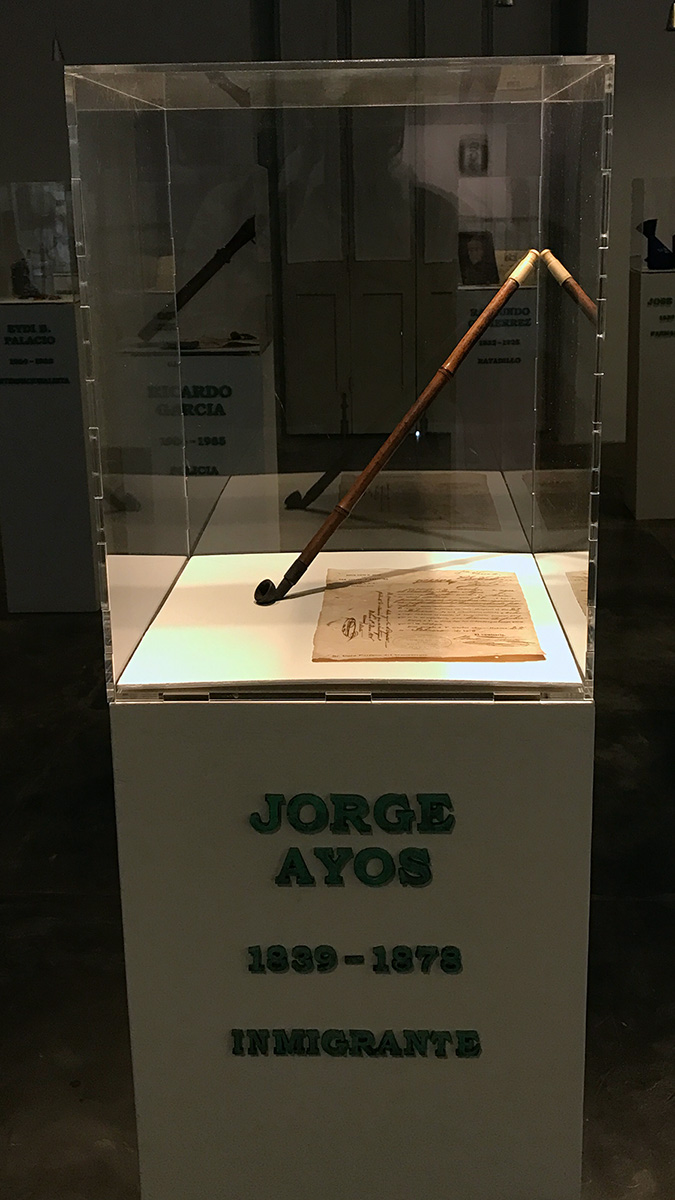
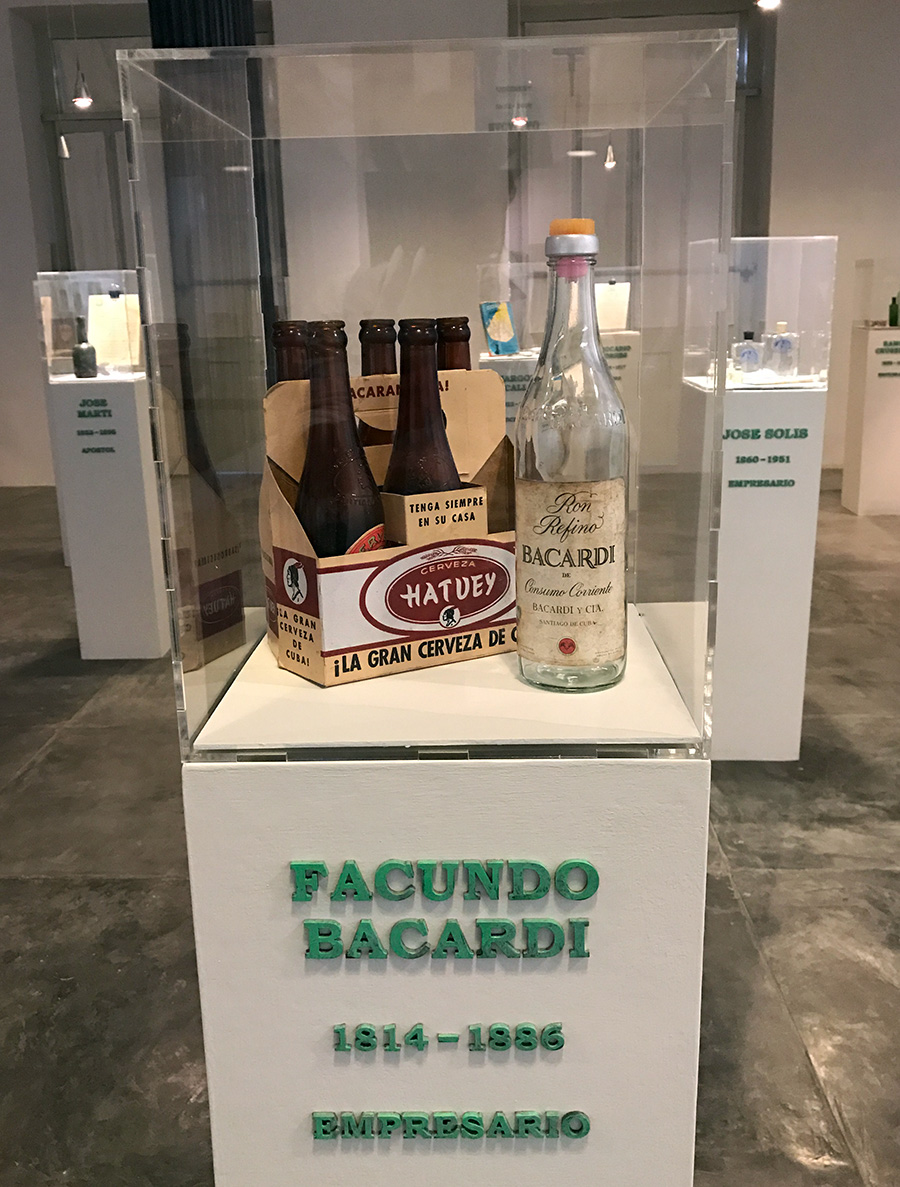
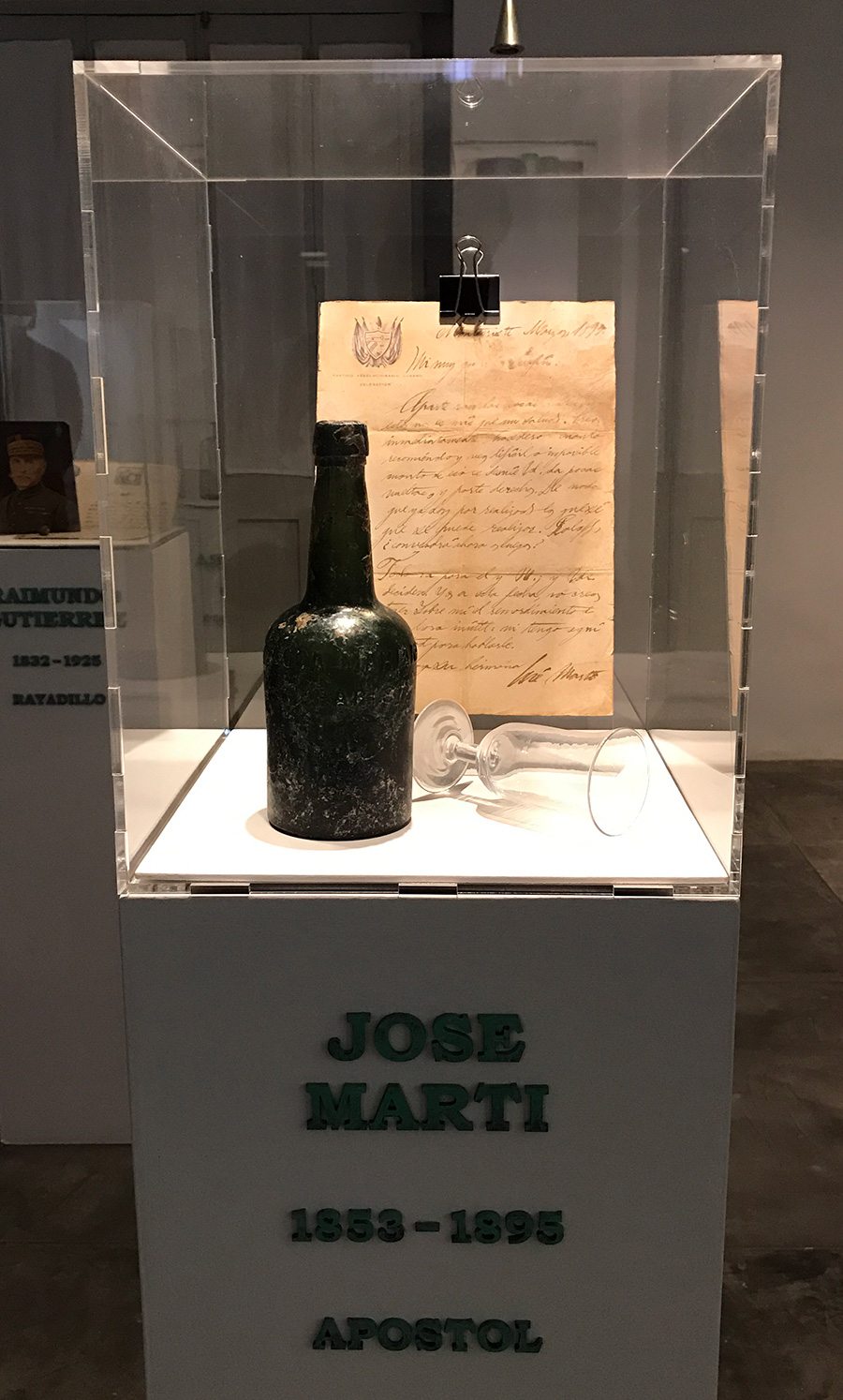
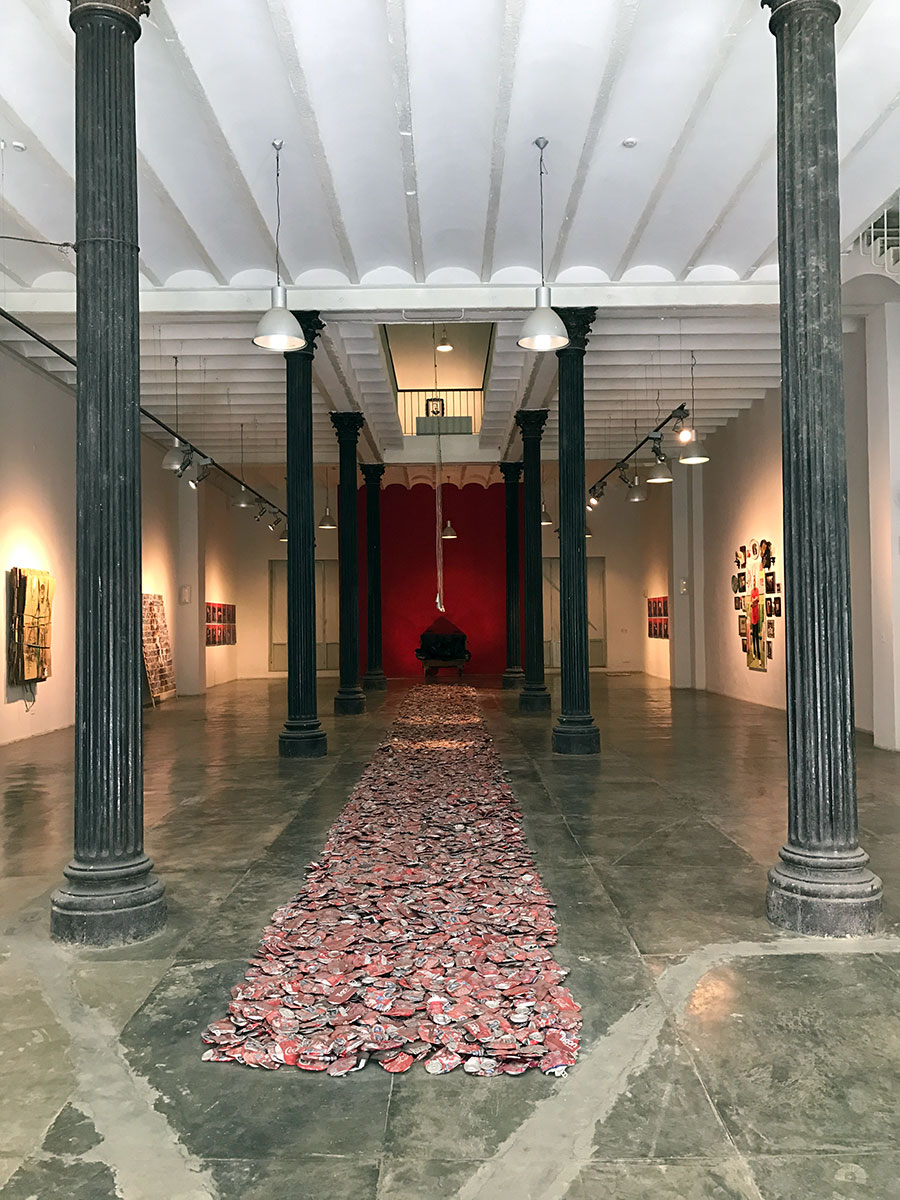 Finally, on the street level, the artists present a red carpet made of flattened tin cans of Cuban beer and soda. And on the three walls of the gallery hang a series of portraits of Cubans today from a street recycler to a flower vendor a famous chef. Each of these portraits are executed on the material or tools of their trade. At the rear of the gallery, are a couple dozen portraits shot on a steel cart with trash bags (that is installed against the rear wall). These portraits seem a bit trite as they try to emulate professional studio portrait images. However the larger portraits are beautifully executed.
Finally, on the street level, the artists present a red carpet made of flattened tin cans of Cuban beer and soda. And on the three walls of the gallery hang a series of portraits of Cubans today from a street recycler to a flower vendor a famous chef. Each of these portraits are executed on the material or tools of their trade. At the rear of the gallery, are a couple dozen portraits shot on a steel cart with trash bags (that is installed against the rear wall). These portraits seem a bit trite as they try to emulate professional studio portrait images. However the larger portraits are beautifully executed.
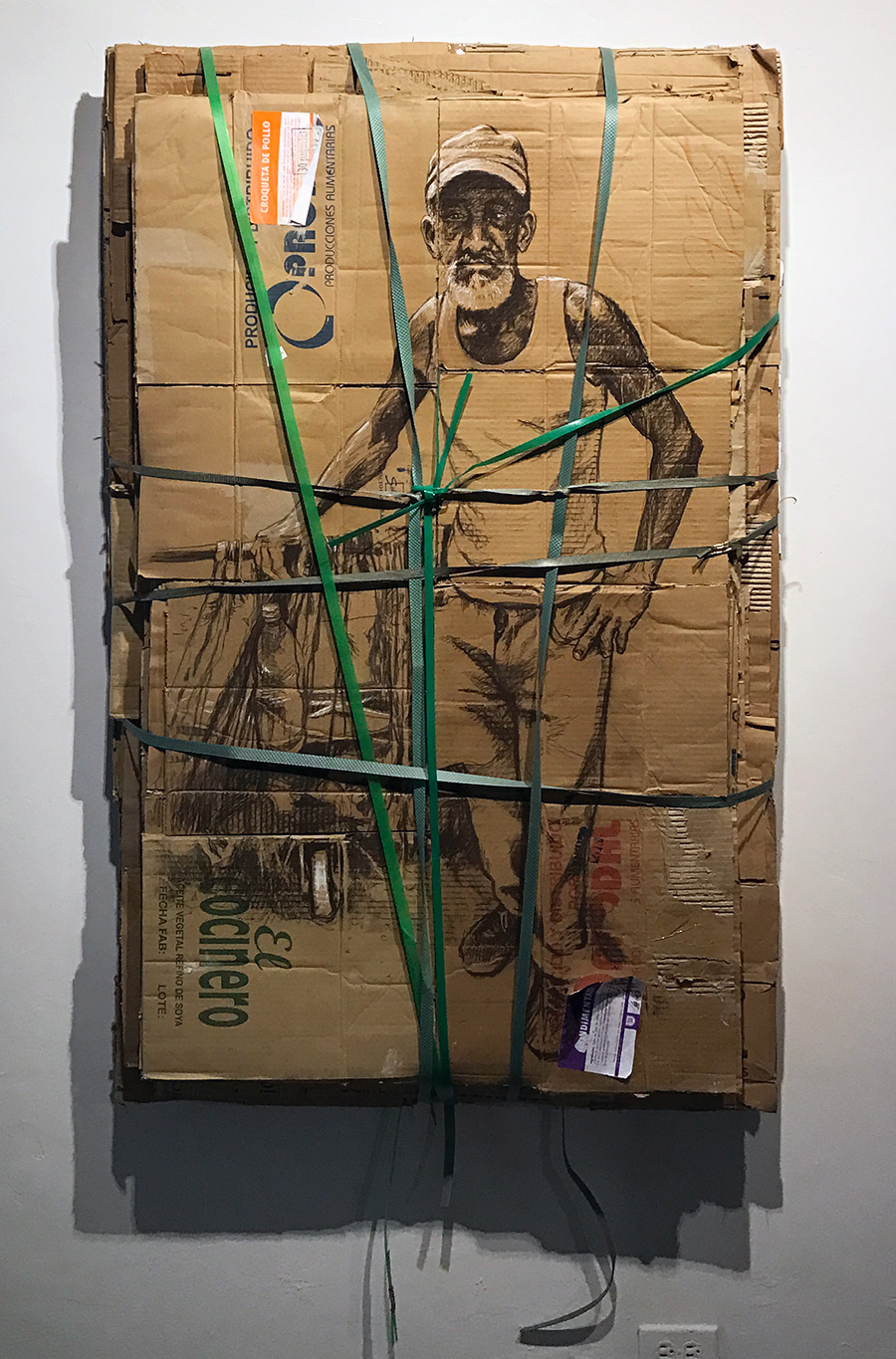
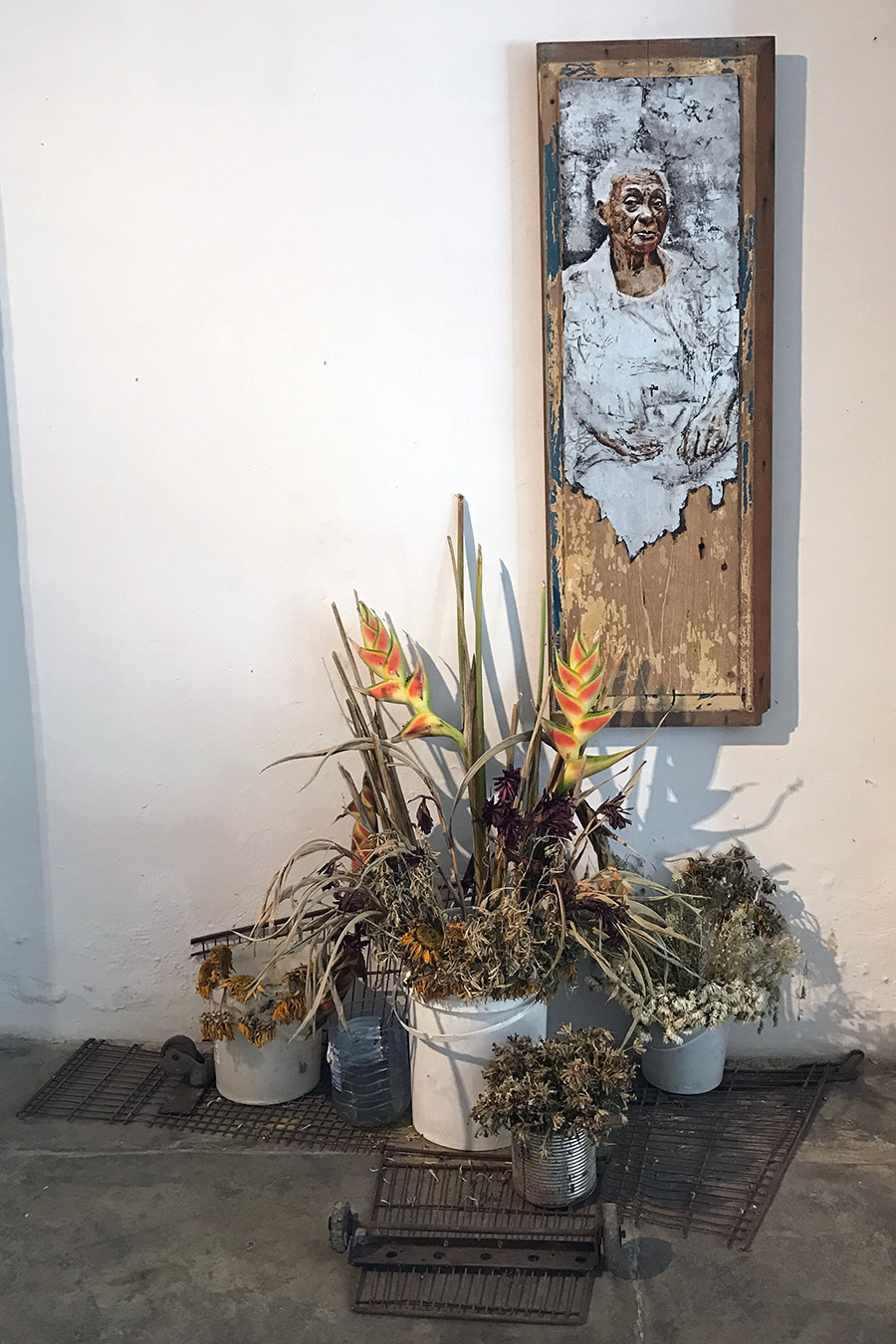
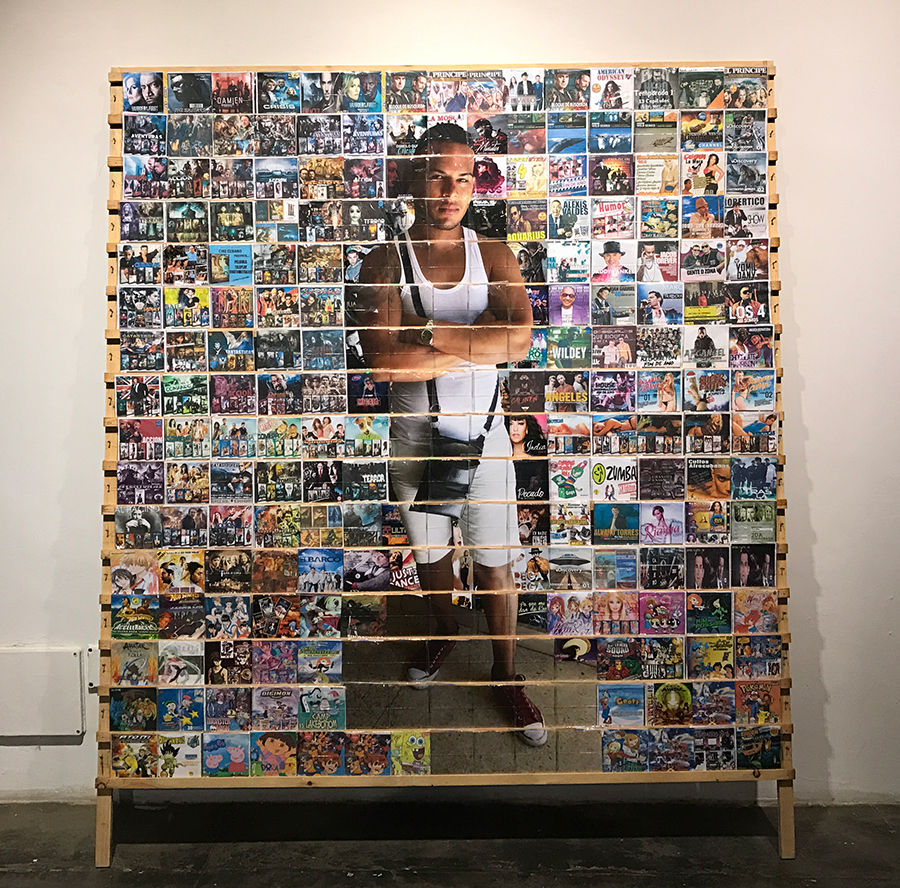
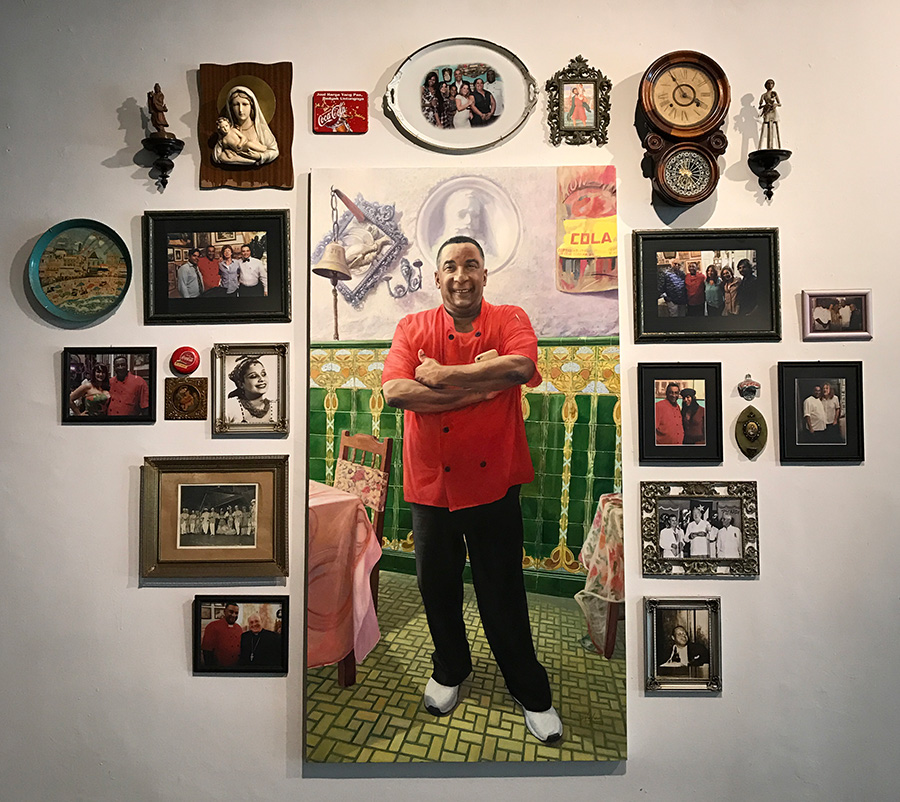
Volta Art Fair 2017
Last night, I strolled through the vast Volta13 Art Fair at Pier 90 in Manhattan. For the most part, the fair did not present anything particularly exciting, but below are a few of the works that I considered beautiful and interesting.
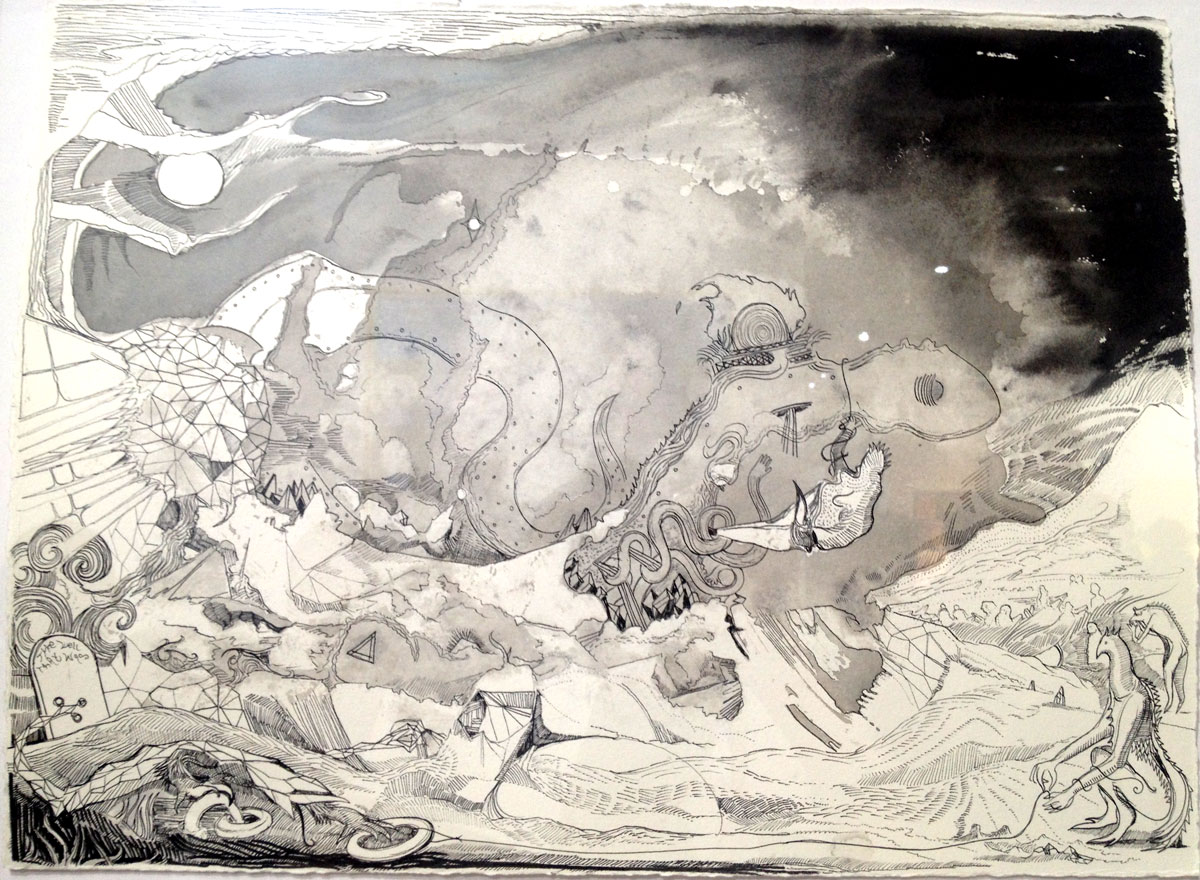
from Max Razdow’s “Metropolis Drawings” that portray “a city in becoming”
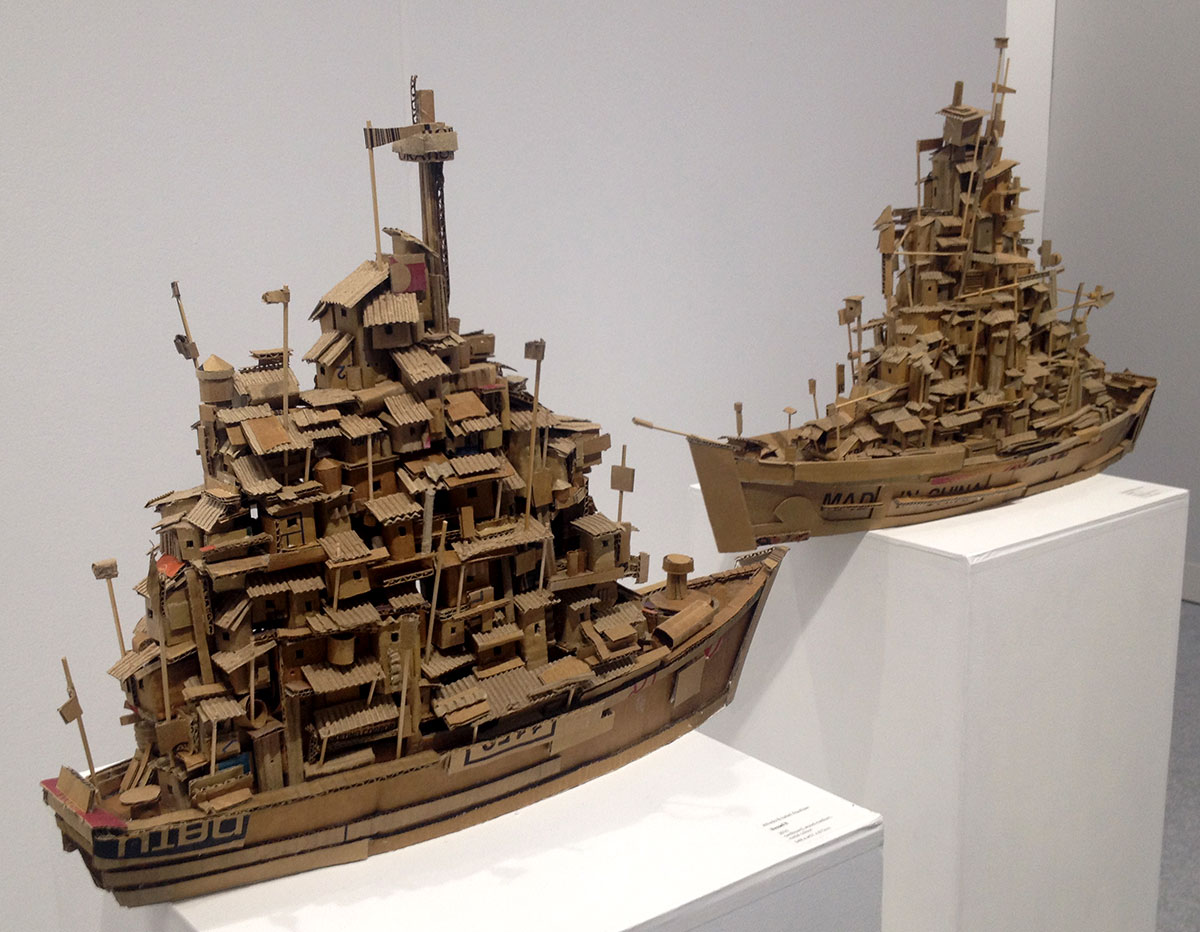
from Alfredo and Isabel Aquilizan’s cardboard boats
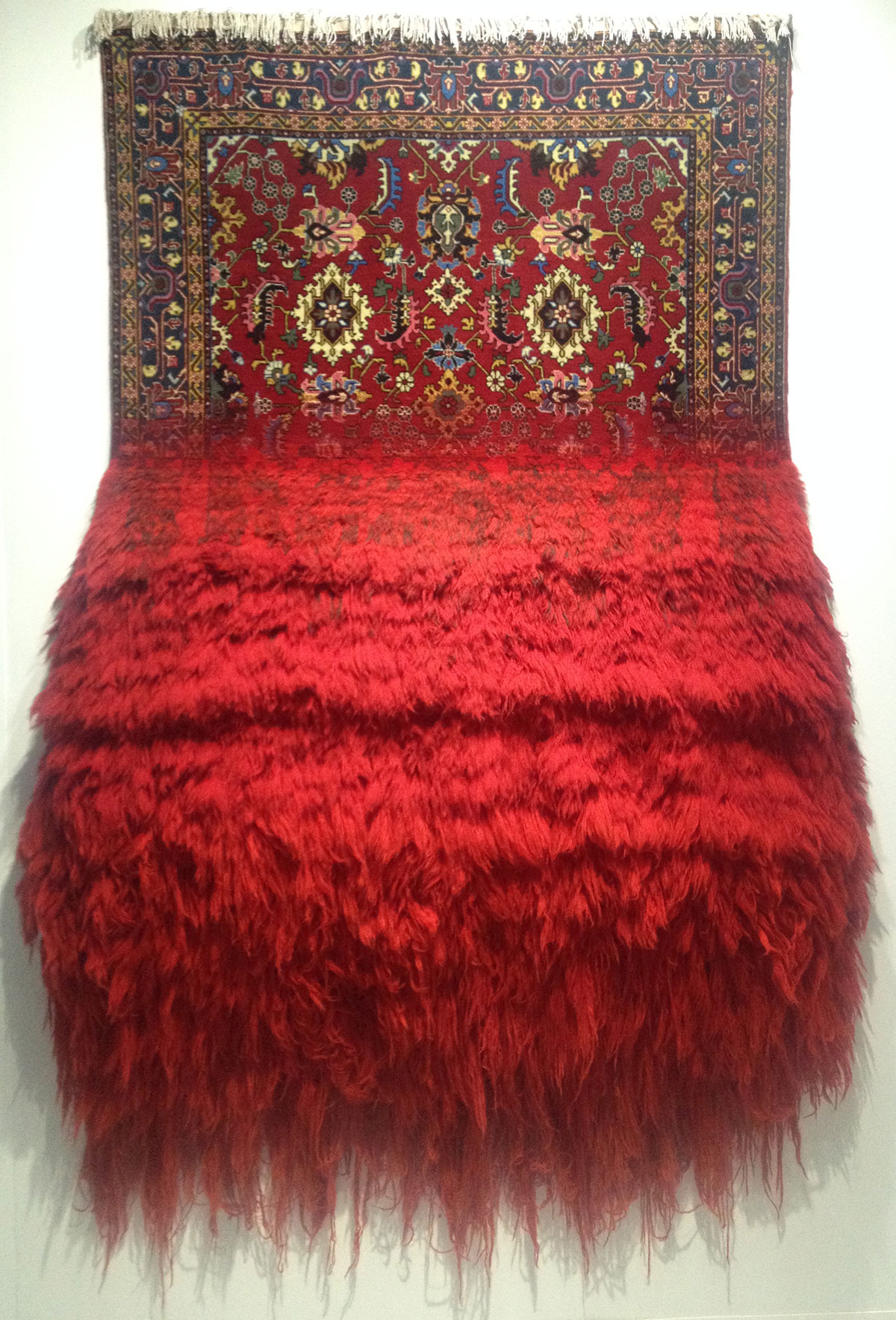
from Faig Ahmed’s beautiful hand made carpet pieces
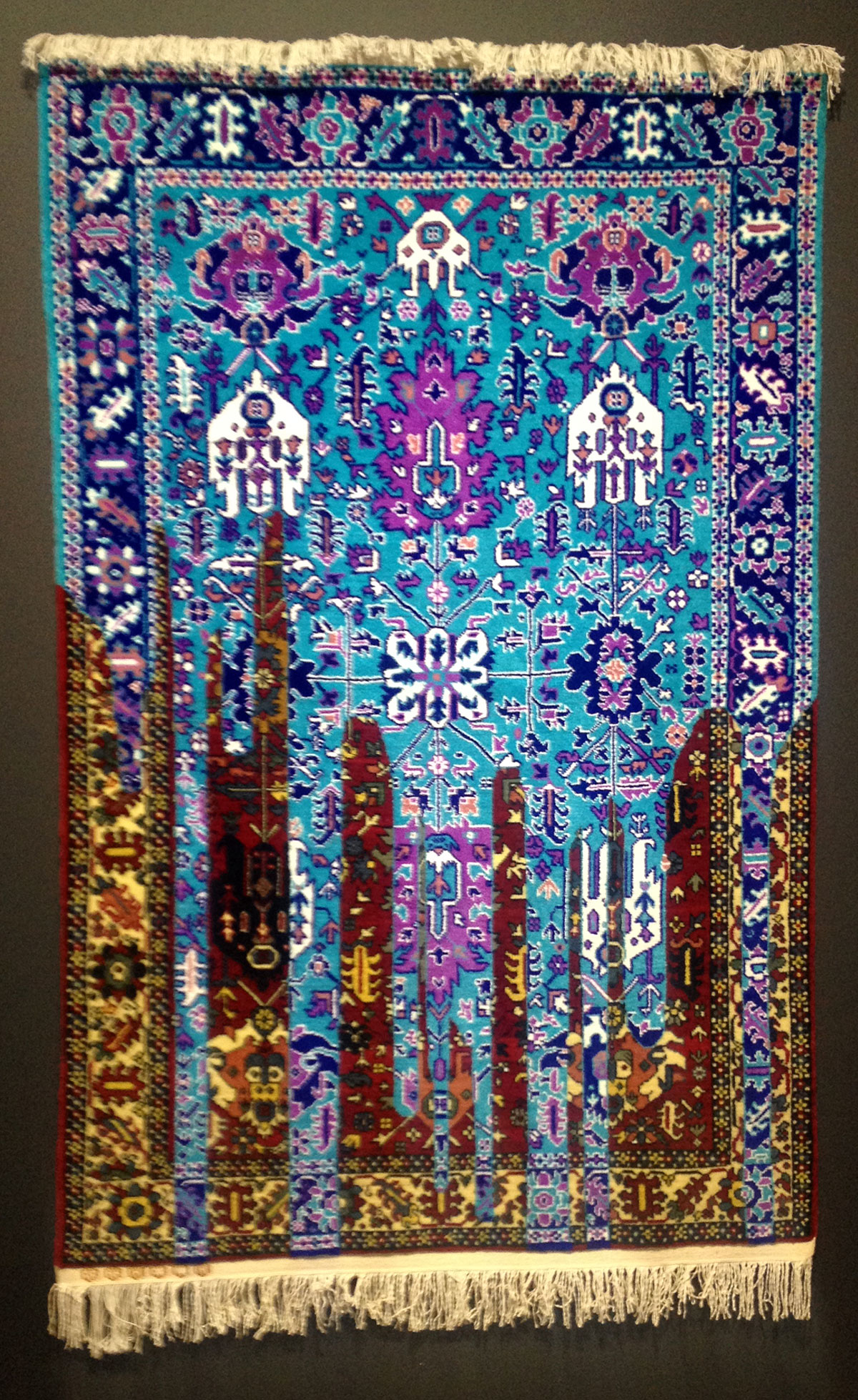
from Faig Ahmed’s beautiful hand made carpet pieces
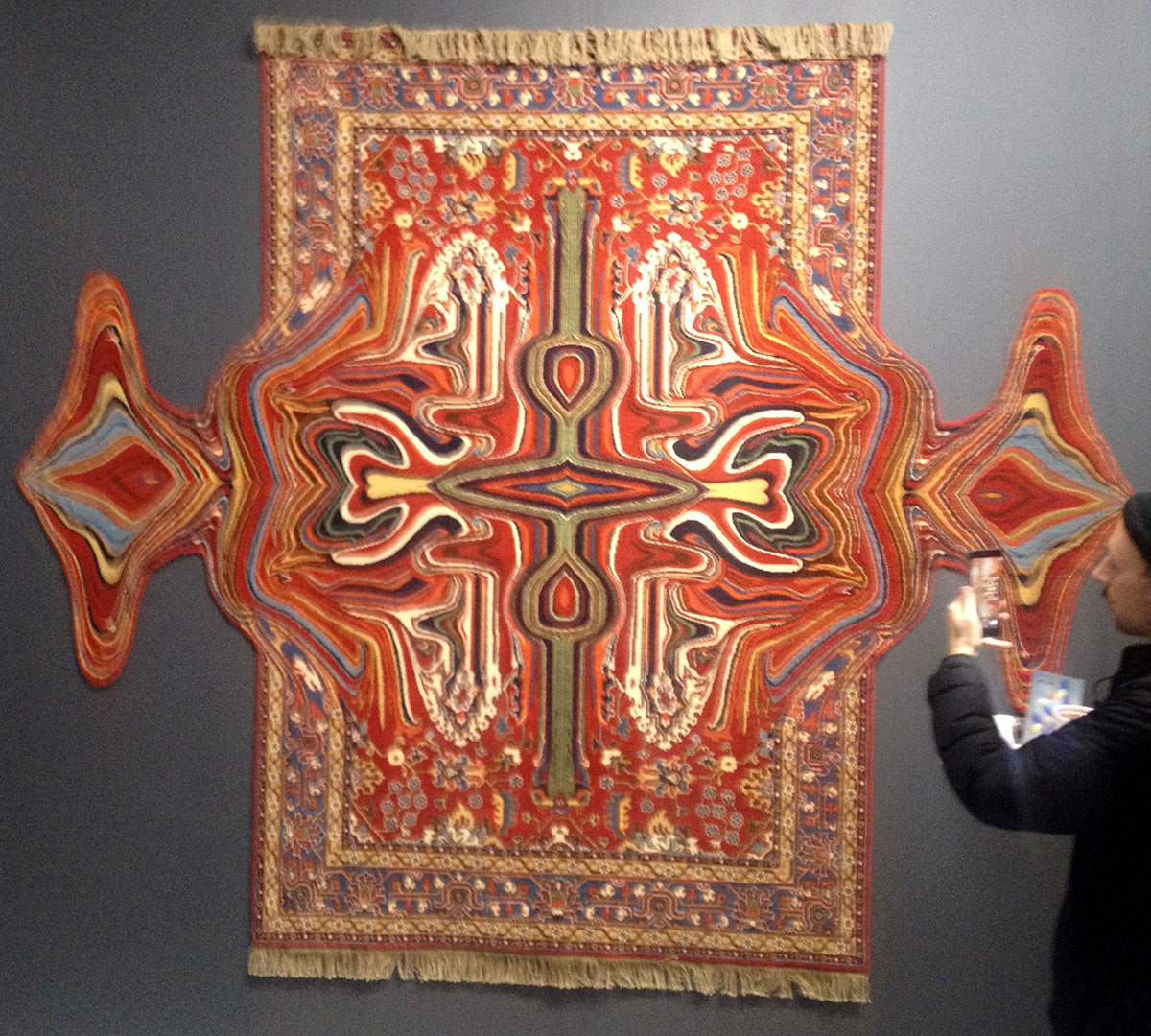
from Faig Ahmed’s beautiful hand made carpet pieces

from Federico Solmi’s awesome animations
OMETEPE Video Game Featured at FLEFF
Curators of Interface/Landscape 2016 New Media Exhibition, Claudia Costa and Dale Hudson have selected the online video game OMETEPE to be featured in the New Media portion of the Finger Lakes Environmental Film Festival at Ithaca College, NY. Check out the festival linked above or go directly to the game: for OMETEPE on Firefox/Mozilla or OMETEPE on Safari/Chrome. However, the best experience is to download and play locally. Download links are listed under the game.
ANOHNI: MARROW
Lorraine O’Grady performs a strikingly beautiful and powerful song for our times!
In the countryside, under the streams
Suck the marrow out of her bones
Inject me with chemotherapies
Suck the money out of her face
We are all Americans now
Africa, Iceland, Europe and Brazil
China, Thailand, India and Great Britain
Australia, Borneo and Nigeria
We are all Americans now
Suck the oil out of her face
Burn her hair, boil her skin
We are all Americans now
from ANOHNI: HOPELESSNESS
Woman In Subway
This is the latest animated loop inspired by traversing the city. Whether walking or on public transit, observations of urban life trigger visual ideas that are rendered as brief animations. Audio accompanying the animations are recordings from urban walks as well as interviews with NYC residents. The audio accompanying this animation is from a brief excerpt from an extended interview with my 86 year old neighbor Louise.
Go to rmz.nyc to see the entire series, click on the central image to go from one to the next. Through the combination of animation, WebGL, web video and audio as well as various javascript libraries such as p5.js and three.js, the browser is employed as a canvas.

